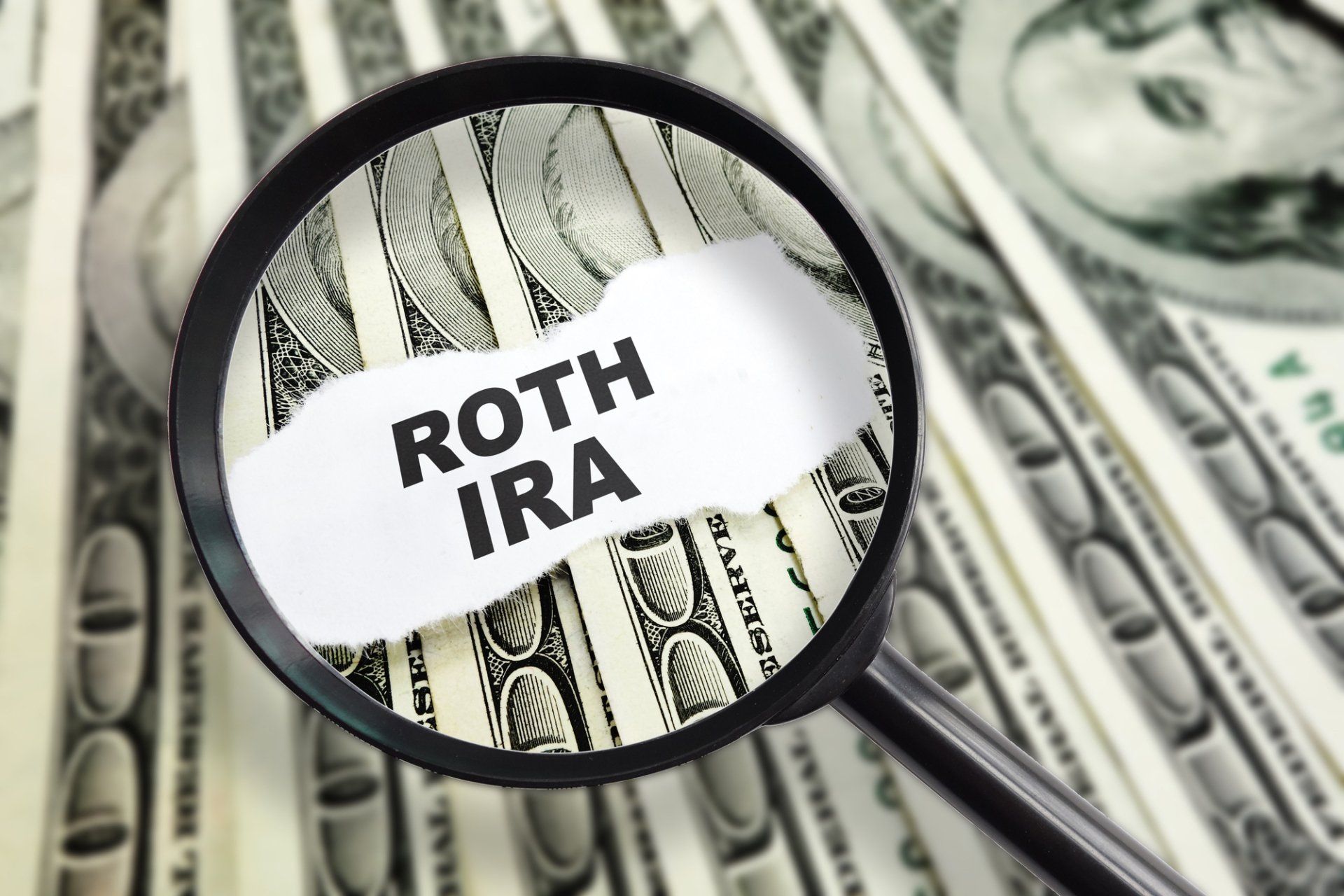The Roth IRA: A Key Ingredient to Your Tax—and Retirement—Strategy
2020 is coming to a close. As you look back at what this year has brought, chances are, many other things topped your priority list before “tax strategy.” In a recent blog, I discussed tax strategies you should review before year-end. Today, I’d like to spend a little bit of time going a bit deeper into one of those strategies…Roth IRAs and 401(k)s.
As a refresher, a Roth IRA allows you to save after-tax dollars, and withdrawals including earnings from the account (after age 59 ½) are income tax-free. The Roth IRA allows you to pay taxes now at a certain rate instead of paying taxes later at an uncertain rate. This is a great way to hedge against future income tax increases.
Let’s explore a Roth IRA a little deeper.
What Makes Roth IRAs So Special?
Here are a few rules that make Roth IRAs special:
- You can make contributions at any age.
- You are not required to make a “required minimum distribution” (RMD) from a Roth IRA. (Traditional IRA account owners must start taking distributions at age 72, changed from 70.5 starting in the year 2020).
- A non-working spouse can open a Roth IRA based on the working spouse’s earnings if they file tax returns jointly.
- You can still make your annual contributions if you convert money from a traditional IRA to a Roth IRA in the same year.
- You can contribute to a Roth IRA even if you participate in a retirement plan through your employer.
When it’s time to withdraw, you’ll pay the ordinary tax rate (typically higher than the long-term capital gain rate) on the distributions from the tax-deferred bucket (traditional IRA or 401(k) plan). You won’t need to pay any taxes on distributions from your Roth IRA after age 59 ½ or having met the five-year rule after converting some IRA money to Roth IRA. Because you use after-tax dollars to fund a Roth IRA, any distributions after age 59.5, including earnings, will be tax-free.
Can I qualify to contribute to a Roth IRA based on my income? The IRS determines the income limit each year for making contributions to a Roth IRA. If you are single, you must have a modified adjusted gross income (MAGI) under $139,000 to contribute to a Roth IRA for the 2020 tax year, but contributions are reduced starting at $124,000. If you are married filing jointly, your MAGI must be less than $206,000, with reductions beginning at $196,000. For 2021, the numbers are higher. The modified adjusted gross income for singles must be under $140,000; contributions are reduced, starting at $125,000. For married filing jointly, the MAGI is less than $208,000, with phase-out starting at $198,000.
What If Your Income Is Too High?
How do you start creating the three buckets of money (tax-deferred, tax-free, and taxable) I spoke about in my last blog, especially in your 40s and 50s when your earned income is too high to contribute to a Roth IRA? You can consider a “Backdoor Roth IRA.” Here’s how it works:
My client, “David,” is age 51 in 2020, his MAGI is $300,000, and he’s married, filing jointly. He is planning to maximize contributions to his 401(k) plan at work that is $19,500 plus $6,500 catch-up contributions for people age 50 and over in 2020. He can still contribute to his traditional IRA account up to $7,000 ($6,000 plus $1,000 catch-up contribution) because he has earned income.
The IRS has income limits to calculate how much of the contributions to an IRA are tax deductible and whether he is covered by a retirement plan at work. As his MAGI is over $124,000 and he is covered by a retirement plan at work, he cannot deduct any of his IRA contributions on his tax returns. However, the non-deductible contributions must be reported on Form 8606 when his federal income tax return is filed so that the IRS has a record of the cost basis of this IRA.
When he decides to convert this IRA balance to a Roth IRA in future years, he only pays income taxes on the earnings portion of this distribution in the year of the Roth conversion. If he does not have pre-tax dollars in this IRA, the taxes he will pay are minimal, and he creates a large Roth IRA over time. Therefore, do not forget to report contributions on your tax returns. As you convert any IRA balance to a Roth IRA, you’ll receive a tax form 1099-R that shows the distribution amount from your IRA, which must be reported on your tax return Form 1040.
Other Roth Strategies
Converting from an IRA to a Roth IRA: In a year (or a few years) in which their income is lower than usual, retirees should consider converting a small amount of their IRA to a Roth IRA each year by watching out not to get into the next tax bracket.
For example, looking at the 2020 federal tax rates, your next tax rate is 24% at $170,051 taxable income as a married joint filer, and your current projected taxable income for this year is about $135,000 (at a tax rate of 22%) because you just retired and decided to delay collecting social security benefits until age 70. Now you can convert an additional $35,050 IRA balance to a Roth IRA by paying taxes at a 22% rate. This way, you can increase your tax-free bucket without paying a high-income tax rate, which will help you keep taxable income low as you withdraw from your Roth IRA when your social security benefit starts at age 70.
If you started a new business and have reduced taxable income in the first year or two, it’s a good opportunity to consider converting some of your IRA to a Roth IRA by watching out for your next tax rate. I’ve converted a significant amount of my IRA balance to a Roth IRA myself twice over the past 16 years to dramatically increase my Roth IRA balance. As you must pay income taxes on the Roth conversion, it’s essential to start saving some extra money early in a non-retirement account. Invest less aggressively than your Roth IRA so that you can tap into it to pay for taxes on the Roth conversions.
Saving even more: If you can save more and have a sizable non-retirement account already, you can also consider switching from contributions from your 401(k) to a Roth 401(k) as well (if your employer offers Roth 401(k)). The annual maximum is the same, but you essentially have increased your retirement savings by funding it with after-tax dollars and distributions that will be tax-free after age 59½. As I mentioned earlier, paying taxes now at a certain rate instead of paying taxes later at an uncertain rate is a way to hedge against future income tax increase through tax diversification.
Use financial planning tools to project your future tax rates based on your projected taxable income year by year to age 95, and today’s tax laws will help you make smart decisions. Remember that you can contribute some to the traditional 401(k) plan and some to the Roth 401(k) plan as long as the total does not exceed the IRS maximum per year. In addition, your employer’s matching contributions will be taxable to you upon distributions.
To truly maximize your tax strategies, I recommend you consult with a financial advisor who is able to look at your overall financial picture and guide you along the way. If you are concerned that there’s just too much to know, I invite you to schedule a complimentary 30-minute Discovery Call. My team at Echo Wealth Management and I can help you navigate these waters. Wealth management can be complicated, but it doesn’t have to be. Let’s chat and see how we can be of service to you.













